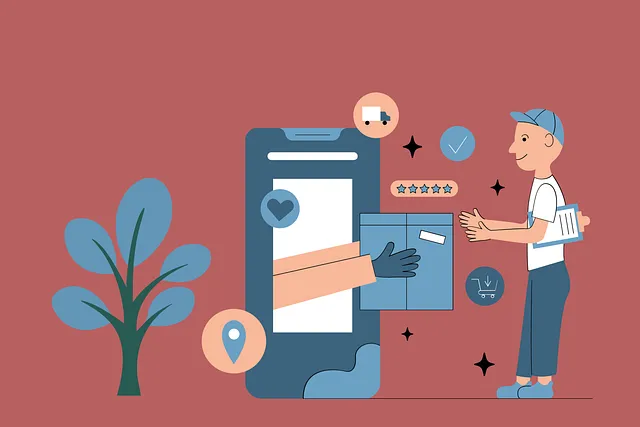In today's digital era, fashion professionals must navigate online shopping with a heightened need for privacy due to competitive markets and surveillance technologies. Discreet online shopping is crucial for designers and influencers to protect their personal preferences, proprietary collections, and intellectual property from competitors and market scrutiny. Anonymizing browsers are now an essential tool for these industry leaders, offering advanced encryption and anti-tracking capabilities that ensure confidentiality for research on unique materials, potential collaborations, and innovative designs. IT professionals in the fashion sector should choose a browser with no-logs policy, secure encrypted protocols, and ad-blocking features to prevent tracking and idea theft, thereby safeguarding both their personal privacy and the integrity of their work. For secure and private transactions, using cryptocurrencies as a payment method is recommended. By following security best practices, including strong passwords, two-factor authentication, and regular updates, fashion industry IT professionals can shop online discreetly, maintaining their anonymity and confidentiality in competitive markets. Emphasizing the use of secure browsers like Tor or TAILS, coupled with privacy-enhancing extensions and VPN services, ensures that fashion designers and influencers can conduct their online business with security and discretion.
In today’s digital landscape, IT professionals and fashion industry insiders alike are navigating an ever-complex web of privacy concerns. As the line between personal and professional life blurs, especially for influential designers, maintaining online anonymity is not just a preference—it’s a necessity. This comprehensive guide delves into the imperative nature of privacy in the digital age, highlighting the critical features to seek in a discreet browsing solution tailored for fashion aficionados and professionals. We’ll provide a step-by-step setup process for an anonymizing browser, ensuring secure online shopping experiences. Subsequently, we’ll discuss best practices to uphold your digital footprint while engaging with fashion e-commerce, enabling you to blend into the industry’s virtual tapestry without compromising your privacy.
- Understanding the Necessity of Privacy in the Digital Age for Fashion Professionals
- Key Features to Look for in a Discreet Browsing Solution
- Step-by-Step Guide to Setting Up an Anonymizing Browser for Secure Online Shopping
- Best Practices for Maintaining Online Anonymity While Engaging in Fashion E-commerce
Understanding the Necessity of Privacy in the Digital Age for Fashion Professionals

In the digital epoch where fashion design and influence permeate online platforms, privacy becomes an increasingly critical concern for professionals in this industry. The necessity for discreet online shopping is paramount for fashion designers and influencers who must navigate the dual landscape of maintaining a public persona while protecting their personal preferences and upcoming collections from competitors and the prying eyes of the market. With the proliferation of data-hungry algorithms and surveillance technologies, these industry leaders require robust solutions to anonymize their web browsing activities. Anonymizing browsers offer a cloak of confidentiality, ensuring that their online searches for unique materials, potential collaborations, or innovative designs remain shielded from the competitive gaze. This layer of privacy is not merely a preference but a strategic imperative in safeguarding intellectual property and maintaining a competitive edge in an industry where inspiration and originality are the lifeblood of success.
Furthermore, as fashion professionals often engage with early-release products and exclusive designs, the risk of leaks can be detrimental to their reputation and business models. Anonymizing browsers provide a secure environment for these individuals to research, gather inspiration, and source materials without the fear of their activities being tracked or their ideas being stolen. The integration of advanced encryption and anti-tracking features within such browsers is not just a tool but a necessity for fashion designers and influencers who value both their personal privacy and the integrity of their professional endeavors in an age where digital footprints can be as revealing as they are influential.
Key Features to Look for in a Discreet Browsing Solution

When selecting a discreet browsing solution tailored for IT professionals, especially those in the realm of fashion design or influencing, it is crucial to prioritize features that offer both privacy and functionality. A robust anonymizing browser should incorporate advanced encryption protocols to safeguard your online activities from prying eyes. This ensures that your online shopping experiences for fashion designs remain secure and private, protecting both your intellectual property and personal data. Additionally, a no-logs policy is essential as it guarantees that your browsing history will not be stored or accessible by third parties.
Furthermore, seamless integration with various platforms and the ability to switch between different user identities without compromising performance are key. This feature is particularly beneficial for fashion designers and influencers who must navigate multiple online environments, such as retailer sites, design software interfaces, and social media platforms, all while maintaining a discreet presence. The browser should also offer an ad-blocking feature to prevent trackers from collecting data on your browsing habits, thus preserving your privacy during the discovery and procurement of fashion items. A user-friendly interface that supports clean and secure downloads of design software or apps is another important aspect to consider, ensuring a smooth and uninterrupted workflow.
Step-by-Step Guide to Setting Up an Anonymizing Browser for Secure Online Shopping

1. For IT professionals seeking to engage in discreet online shopping, particularly within the fashion design and influencer sectors, an anonymizing browser becomes a prudent tool for maintaining privacy and security. The process of setting up such a browser involves careful consideration of various settings and extensions that enhance user anonymity. Begin by selecting a reputable anonymizing browser like Tor or a privacy-focused option like Brave or Firefox with privacy add-ons. Install the browser, ensuring it’s from the official source to avoid counterfeit versions that could compromise security. Next, configure your browser’s settings to block trackers and scripts by default. Utilize privacy-centric search engines such as DuckDuckGo to prevent search history tracking. For added discretion, employ a VPN service that complements your anonymizing browser, encrypting your connection and masking your IP address. Regularly update your browser and security extensions to safeguard against emerging vulnerabilities. Lastly, maintain good cybersecurity practices such as using strong, unique passwords and enabling two-factor authentication where possible.
2. Once your anonymizing browser is set up, navigate to fashion retail websites with peace of mind. Digital fingerprinting techniques used by retailers to track users can be mitigated by enabling anti-fingerprinting extensions within your browser. These tools scramble or randomize the data points that websites collect, making it harder for third parties to identify and follow your online activities. Additionally, consider using secure payment methods like cryptocurrencies to further anonymize your transactions. Ensure that your anonymizing browser’s settings prioritize your privacy; options for HTTPS-Everywhere, NoScript, or similar plugins can prevent potentially exploitable loopholes. By adhering to these steps, IT professionals in the fashion industry, as well as influencers, can conduct their online shopping with a high degree of discreetness and security, protecting their privacy and maintaining an edge in competitive markets.
Best Practices for Maintaining Online Anonymity While Engaging in Fashion E-commerce

For IT professionals who are fashion designers or influencers looking to maintain online anonymity while indulging in discreet online shopping, employing a robust and reliable anonymizing browser is paramount. These browsers, such as Tor or TAILS, offer encrypted connections that mask IP addresses, making it exceedingly difficult for third parties to trace online activities back to the user. Utilizing such tools can ensure that your purchasing habits, particularly in the competitive fashion industry, remain confidential.
In addition to utilizing an anonymizing browser, implementing best practices is crucial. This includes disabling webcam and microphone access when not in use, as these can be exploited for surveillance. Regularly updating the operating system and browser software to patch security vulnerabilities is also a must. Employing strong, unique passwords for each online shopping account and enabling two-factor authentication adds an extra layer of security. Moreover, avoiding the use of personal information during the checkout process and using payment methods that do not link directly to personal banking accounts can further enhance one’s digital footprint. By adhering to these practices, IT professionals in the fashion realm can engage in discreet online shopping with greater confidence in their anonymity.
In today’s digital landscape, where privacy is paramount, fashion professionals and influencers alike must safeguard their online activities. A discreet browsing solution is not just a preference but a necessity to maintain confidentiality in one’s shopping endeavors and professional research. This article has delved into the critical aspects of online privacy, highlighting key features to seek in an anonymizing browser, guiding through the setup process for secure online transactions, and offering best practices to uphold anonymity within fashion e-commerce. By embracing these tools and strategies, IT professionals and fashion enthusiasts can navigate the web with confidence, ensuring their digital footprint remains theirs alone.
